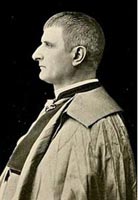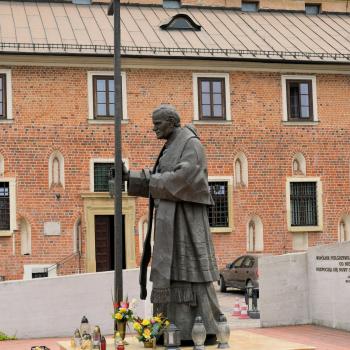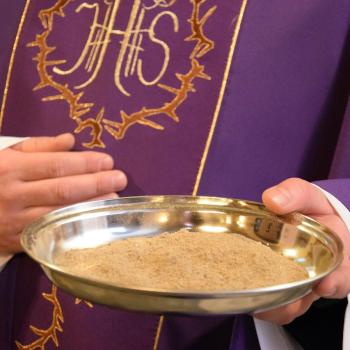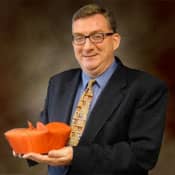William Seton (1835-1905) also studied abroad before the war. A captain in a New York regiment, he was wounded twice. After the war, he wrote novels and poetry, studied psychology in Europe, and authored scientific works for popular audiences.
During the war, their brother Robert (1839-1927) was a seminarian in Rome. Arguing that his family background qualified him as a nobility of sorts, he gained admission to the Pontifical Academy of Noble Ecclesiastics, a diplomatic training school for priests of aristocratic birth. He frequently noted that he was the only American member. In the family history, he also points out that he was the first American priest to be named a Monsignor (in 1867).
 |
| Monsignor Robert Seton, 1899 |
Back home he continued to cultivate Roman connections. After many years in a Jersey City parish, he returned to Rome, taking his place among the nobility. In 1903, he was named an honorary archbishop. He had his peculiarities; he got upset if the missal ribbons weren't ironed before he said Mass. He also made unusual statements like, "All great men have small feet. I have small feet." Financial considerations (and aristocratic tastes) forced a return to America, where the Sisters of Charity looked after him during his final years.
When Robert was ordained for the Newark Diocese in 1865, the bishop was his cousin James Roosevelt Bayley (1814-1877), whose father was Elizabeth's half-brother. He was named for his maternal grandfather, James Roosevelt, a wealthy New York merchant. Ordained for the Episcopal Church in 1839, he converted in 1842 and became a Catholic priest. He was removed from his grandfather's will.
 |
| Archbishop James Roosevelt Bayley (1814-1877) |
He became first Bishop of Newark in 1853, a diocese covering all New Jersey. Three years later he founded a college in Madison, New Jersey, which he named for his aunt. Seton Hall College (now university) moved to its South Orange campus in 1880. In 1872, he was appointed Archbishop of Baltimore. He was buried next to Mother Seton in Emmitsburg.
 |
| Seton Hall College, ca. 1900 |
The nephew of a saint, Bayley was also a distant cousin of two presidents, a Dutch Reformed Republican and an Episcopal Democrat. Although neither Theodore nor Franklin had Catholic connections within their immediate families, they numbered many among their friends, colleagues, and supporters. In 1905, Theodore was the first president to speak at a Catholic college, Holy Cross in Worcester, Massachusetts. Both men cherished the memory of their distinguished Catholic relatives, and enjoyed reminding Catholic voters of it.
 |
| Former President Theodore Roosevelt with his close friend Cardinal James Gibbons of Baltimore, 1918 |
Soldiers, sailors, scientists, prison chaplains, teachers, social workers, authors, nuns, priests, and bishops: St. Elizabeth Bayley Seton and her family shaped Catholic life in 19th-century America. And they continue to shape it today. Their descendants can take pride in the continuing legacy of education, scholarship, health care, and pastoral ministry, all driven by the same spirit of charity that motivated Elizabeth, her Sisters, and her children two hundred years ago.





